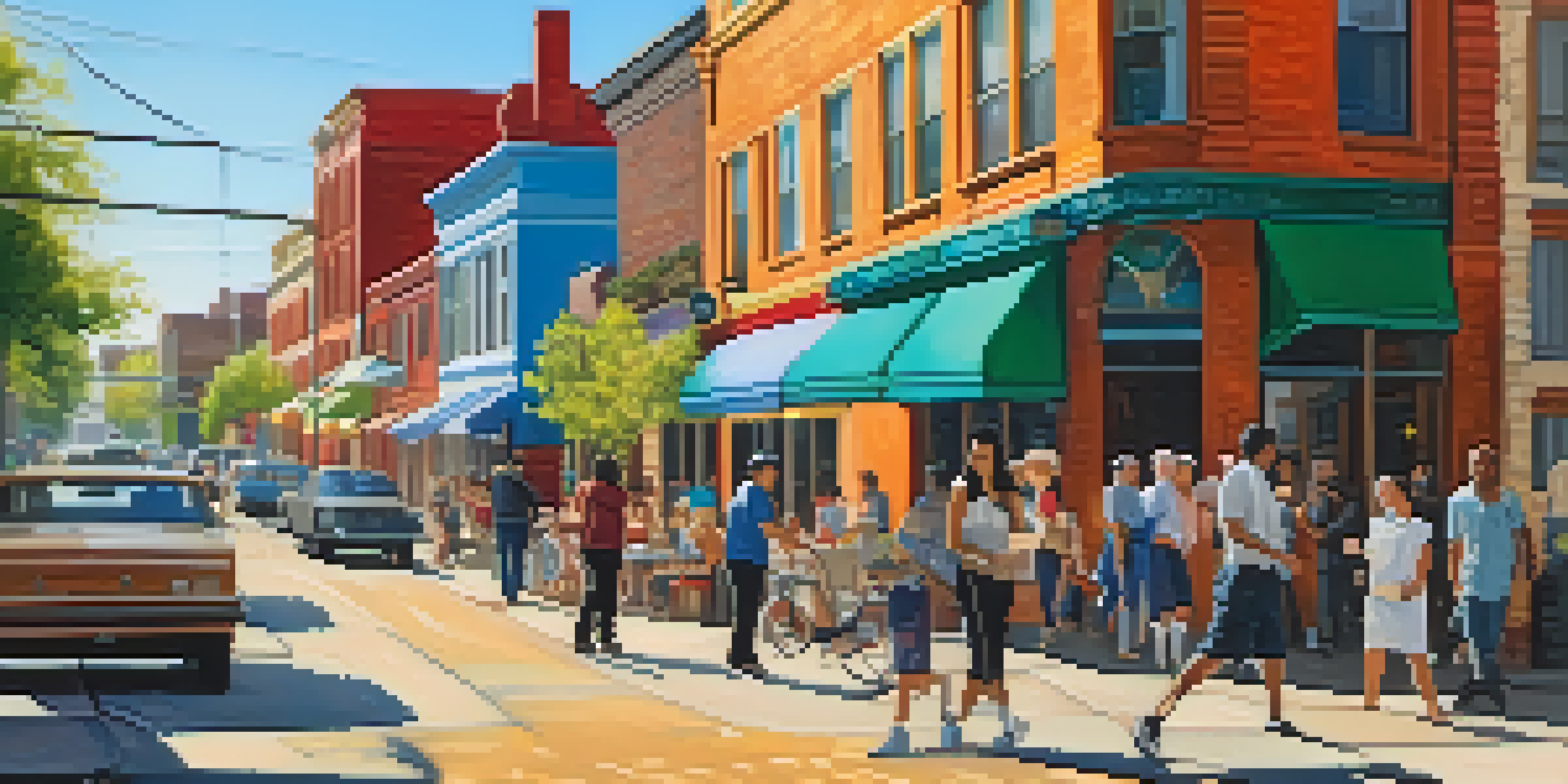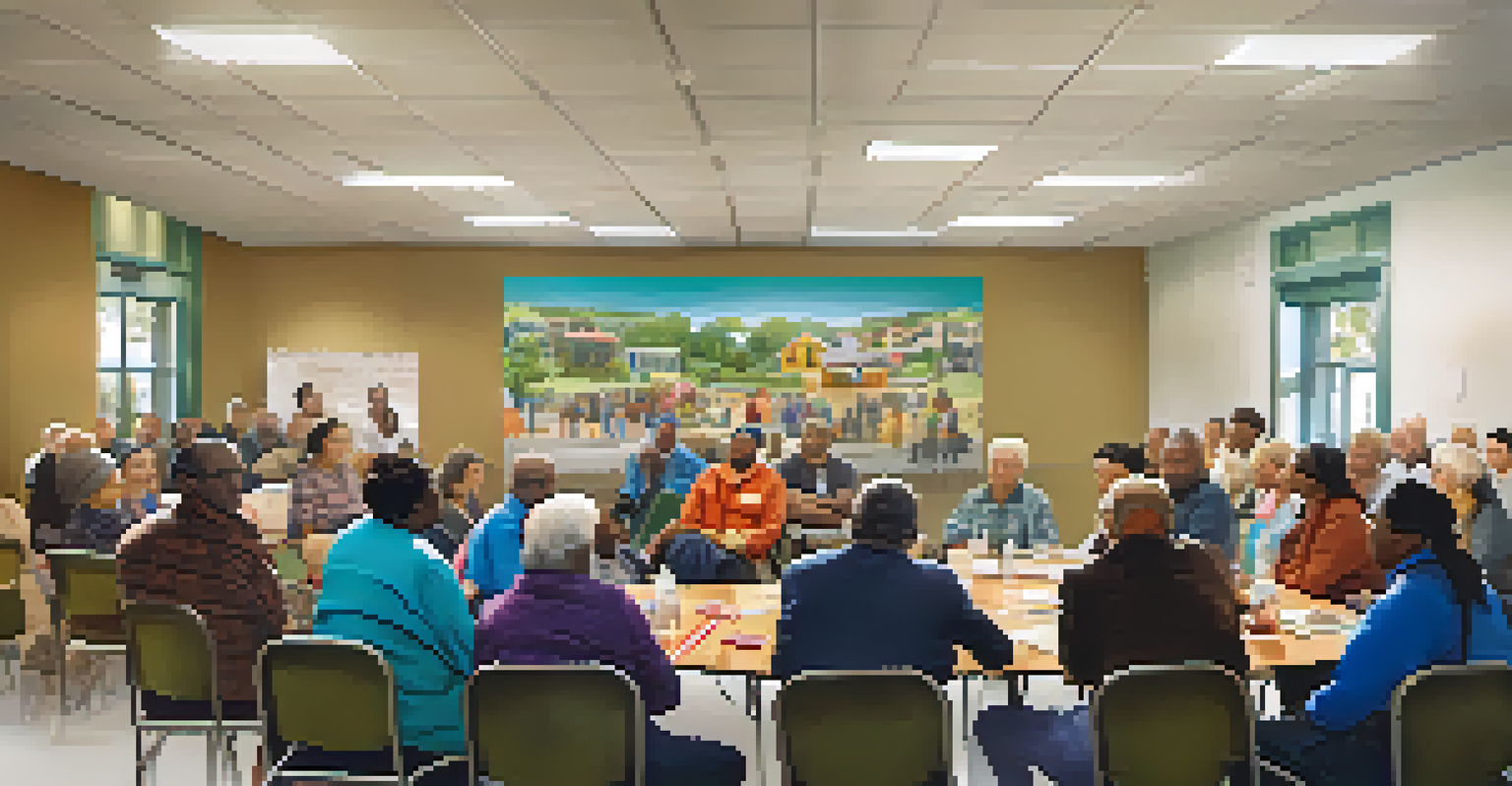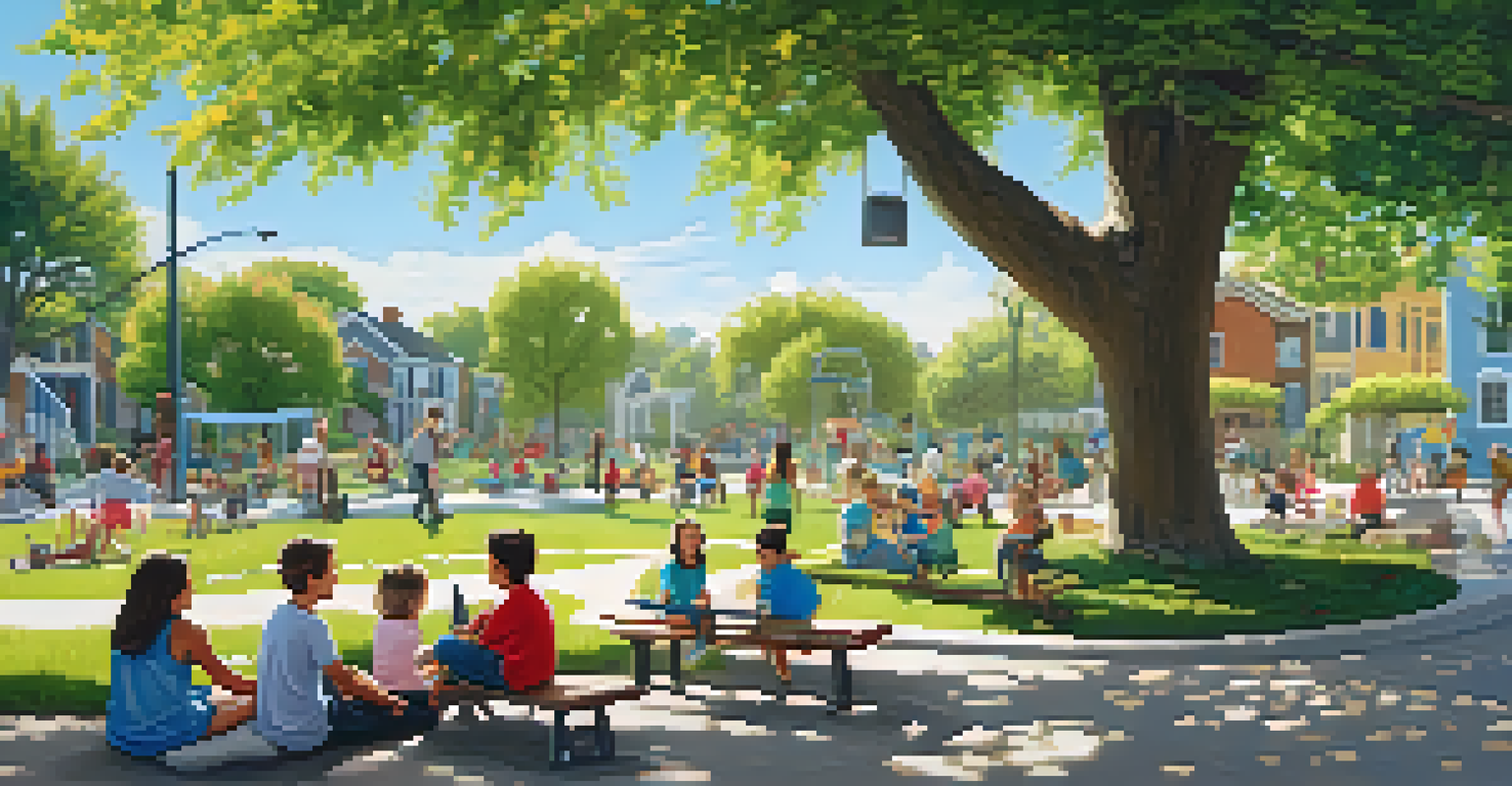Gentrification and Community Identity: A Double-Edged Sword

Understanding Gentrification: More Than Just Change
Gentrification refers to the transformation of neighborhoods as wealthier individuals move in, often displacing long-time residents. This process can improve local infrastructure and amenities, but it often comes at a steep cost for existing community members. It's essential to recognize that gentrification isn't merely about economic shifts; it also involves cultural and social dynamics that affect community identity.
Gentrification is not just a matter of economics; it’s about people, culture, and community identity.
As new businesses pop up and property values rise, the original character of a neighborhood can be diluted. For instance, a local diner may be replaced by a trendy café that caters to a different crowd, altering the neighborhood's vibe. This change can lead to a sense of loss for long-term residents who feel their culture and history are being overshadowed by newcomers.
Thus, gentrification is a complex phenomenon that offers both opportunities and challenges. While some see it as a chance for revitalization, others experience it as a threat to their way of life. To truly understand its implications, we must delve deeper into how it impacts community identity.
The Positive Aspects of Gentrification
It's easy to focus on the negatives of gentrification, but there are also significant benefits that can arise from this process. Improved infrastructure, such as better roads, parks, and public transportation, can enhance the quality of life for all residents. Moreover, new businesses can create job opportunities, fostering economic growth in the area.

For example, a neighborhood that was once struggling may see a resurgence of interest from investors. This can lead to revitalized streets, increased safety, and a more vibrant community where people are excited to live and work. Additionally, the influx of new residents can bring diversity and fresh perspectives, enriching the cultural fabric of the community.
Gentrification: A Double-Edged Sword
While gentrification can lead to neighborhood revitalization and improved infrastructure, it often displaces long-term residents and erodes cultural identity.
Ultimately, while gentrification can result in the loss of some local traditions, it can also breathe new life into neighborhoods, making them more attractive places to live. Balancing these benefits with the needs of existing residents is crucial to fostering a thriving community.
Challenges Faced by Long-Term Residents
Despite the potential upsides, long-term residents often face significant challenges during gentrification. One of the most pressing issues is the rising cost of living, which can force families out of their homes. As property values soar, so do rents, leading to a situation where people who have lived in a neighborhood for years can no longer afford to stay.
The greatest challenge of gentrification is not the change itself, but the loss of the community that comes with it.
In addition to financial pressures, long-time residents may feel a loss of belonging as their community changes around them. The once-familiar streets and local businesses may be replaced by establishments that cater to a new demographic, leaving original residents feeling alienated. This sense of displacement can erode community ties and lead to social fragmentation.
Moreover, the cultural erasure that sometimes accompanies gentrification can be deeply painful. Traditions, languages, and social networks that have flourished in these neighborhoods can be threatened, making it essential to consider how to preserve these unique identities amidst change.
Community Identity: The Heart of the Matter
At the core of the gentrification debate is the concept of community identity. This refers to the shared values, traditions, and social connections that define a neighborhood. As gentrification occurs, these identities can be challenged, leading to a complex interplay of nostalgia and progress.
For instance, a neighborhood with a rich history of art and activism may see its galleries replaced by luxury condos. While some newcomers may appreciate the artistic legacy, they might not fully understand or value the community's history, leading to a disconnect. This lost appreciation can result in resentment among long-time residents who feel their contributions are overlooked.
Community Identity Matters
The essence of a neighborhood lies in its community identity, which can be threatened by gentrification unless efforts are made to ensure all voices are heard.
Thus, understanding and honoring community identity is crucial. It’s not just about preserving the past; it’s about integrating those values into the future of the neighborhood, ensuring that all voices are heard and valued in the conversation about change.
Balancing Development and Community Needs
Finding a balance between development and the needs of existing residents is no small feat. Planners and policymakers must navigate the tricky waters of gentrification to create equitable solutions that serve everyone. This often involves engaging with community members to understand their needs and aspirations.
One approach is to implement policies that protect affordable housing while still encouraging new investment. For example, community land trusts and rent control measures can help maintain housing accessibility for long-term residents. Additionally, incorporating input from diverse community members into development plans can lead to outcomes that reflect the values and desires of all stakeholders.
Ultimately, the goal should be to create a community that respects its history while embracing new opportunities. When development is approached thoughtfully, it can lead to a vibrant neighborhood that honors its past and looks forward to a prosperous future.
The Role of Local Government and Policy
Local government plays a pivotal role in shaping the course of gentrification and its impact on community identity. Policies can either mitigate the negative effects of gentrification or exacerbate them, depending on how they are crafted and implemented. It’s crucial for officials to prioritize community needs in their decision-making processes.
For example, zoning laws can significantly influence the type of development that occurs in a neighborhood. By encouraging mixed-use developments that include affordable housing, local governments can ensure that gentrification doesn’t push out existing residents. Moreover, funding for community services and resources can help support those who are vulnerable to displacement.
Activism for Equitable Development
Community activism plays a vital role in advocating for affordable housing and preserving local culture amidst the pressures of gentrification.
Engaging in transparent dialogue with residents about proposed changes can also foster trust and collaboration. When people feel their voices matter, they are more likely to support development initiatives that benefit the entire community, rather than just newcomers.
Community Activism: A Response to Gentrification
In response to the challenges posed by gentrification, many communities have turned to activism as a way to reclaim their identities. Grassroots movements often emerge to advocate for affordable housing, preservation of local culture, and equitable development practices. This activism can take various forms, from organizing protests to participating in local government meetings.
A notable example is the rise of neighborhood associations, which work to amplify the voices of long-time residents. These groups can be instrumental in fighting for policies that protect their community’s interests, ensuring that development doesn’t come at the expense of those who have lived there for generations. Their efforts can create a sense of solidarity and empowerment among residents.

Through community activism, residents can not only push back against negative effects of gentrification but also actively shape the future of their neighborhoods. This engagement fosters a sense of ownership and pride, helping to preserve the unique identity that makes each community special.